
How to Use 7805: Examples, Pinouts, and Specs
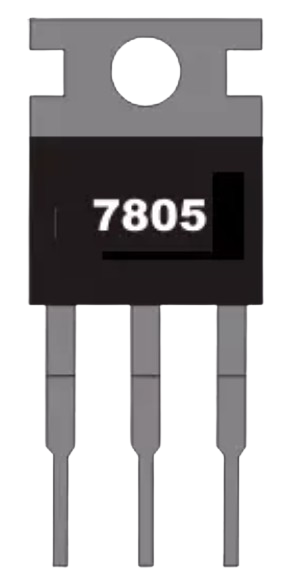
 Design with 7805 in Cirkit Designer
Design with 7805 in Cirkit DesignerIntroduction
The 7805 is a linear voltage regulator that provides a stable and regulated output of 5V. It is part of the 78xx series of voltage regulators, which are widely used in electronic circuits to ensure a consistent power supply. The 7805 is particularly useful for powering microcontrollers, sensors, and other components that require a steady 5V DC supply. Its simplicity, reliability, and ease of use make it a popular choice for both hobbyists and professionals.
Explore Projects Built with 7805
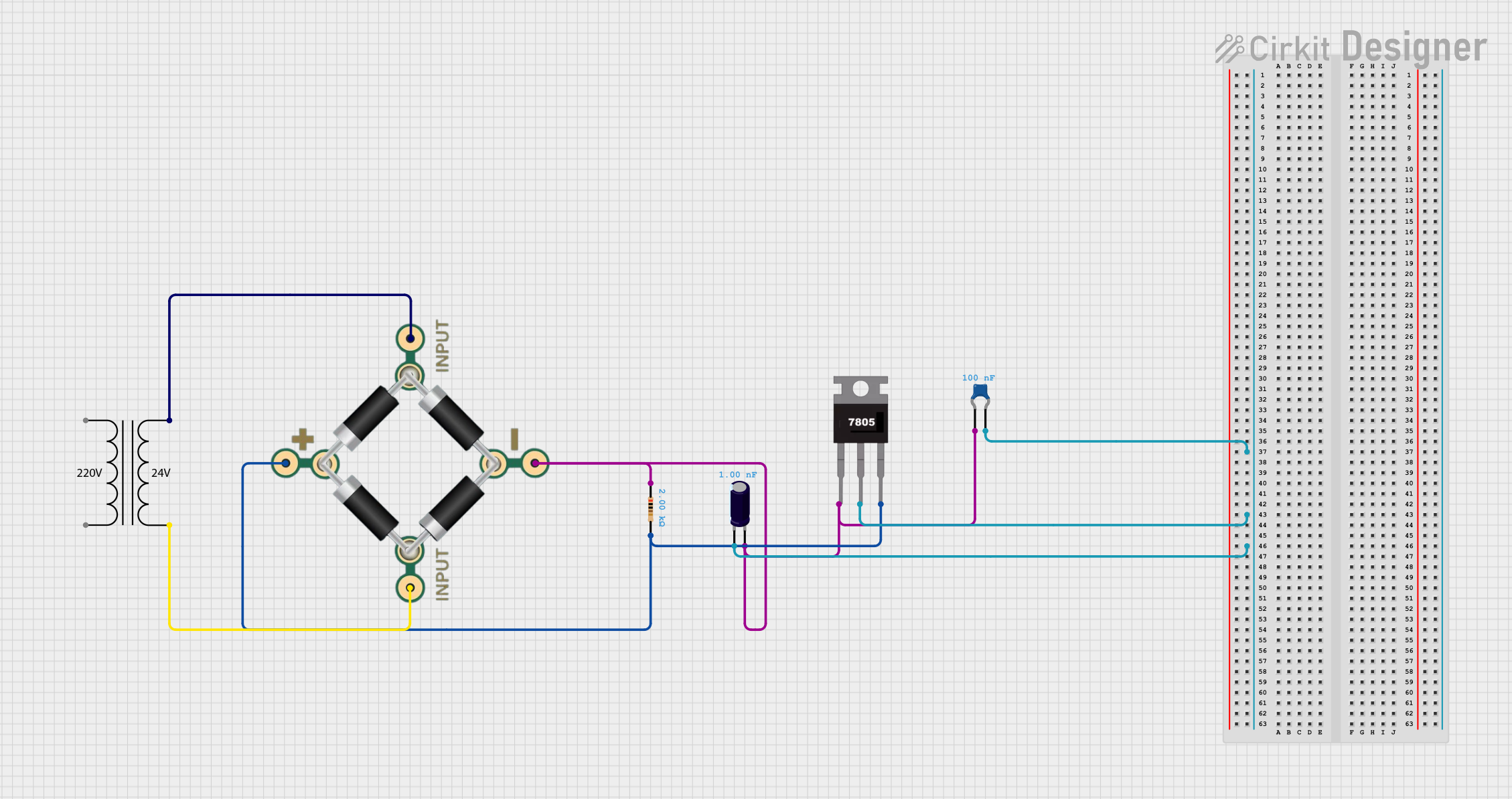
 Open Project in Cirkit Designer
Open Project in Cirkit Designer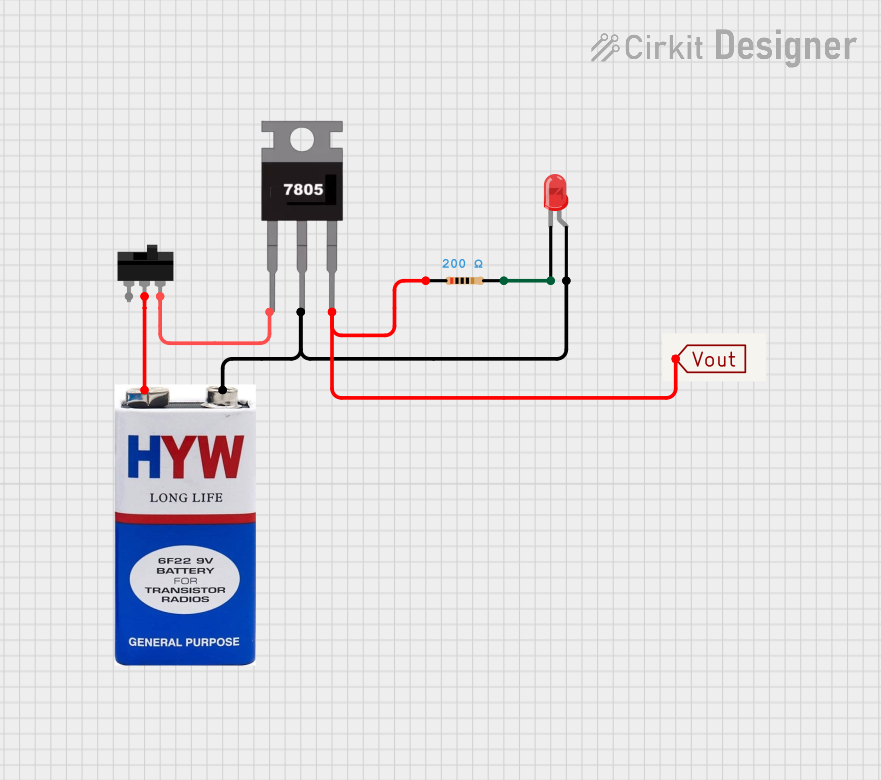
 Open Project in Cirkit Designer
Open Project in Cirkit Designer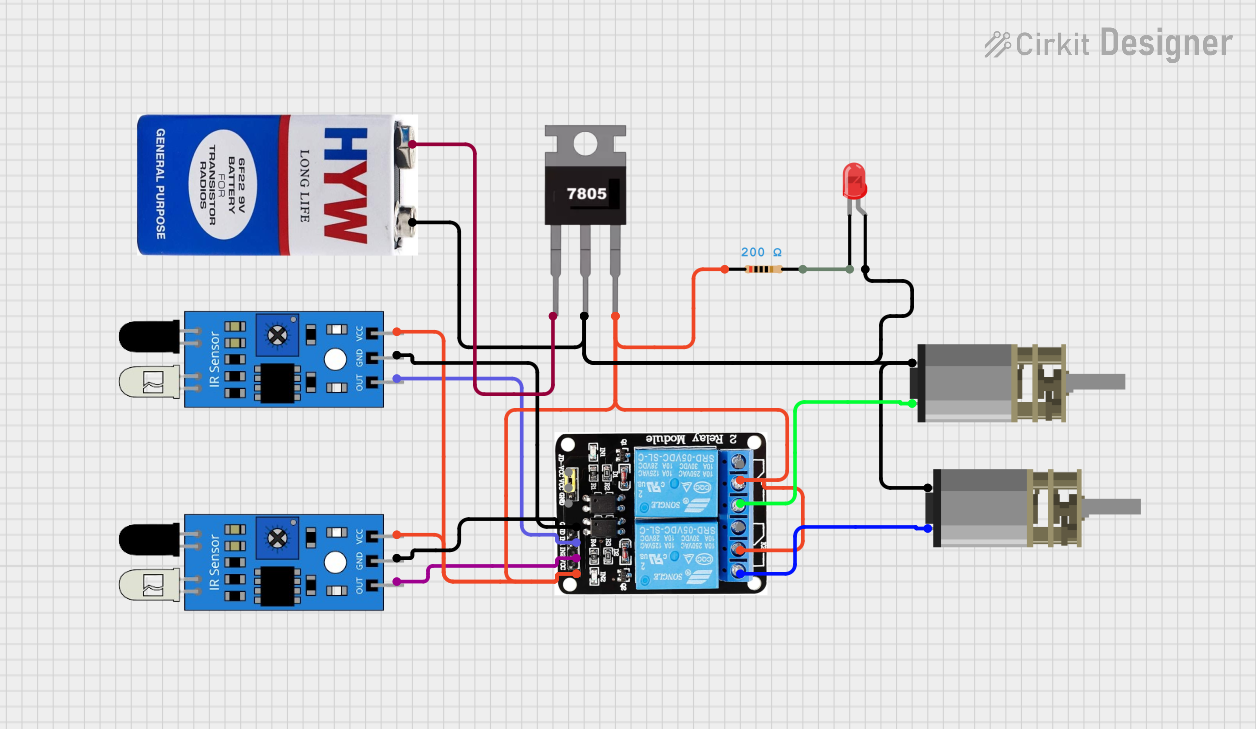
 Open Project in Cirkit Designer
Open Project in Cirkit Designer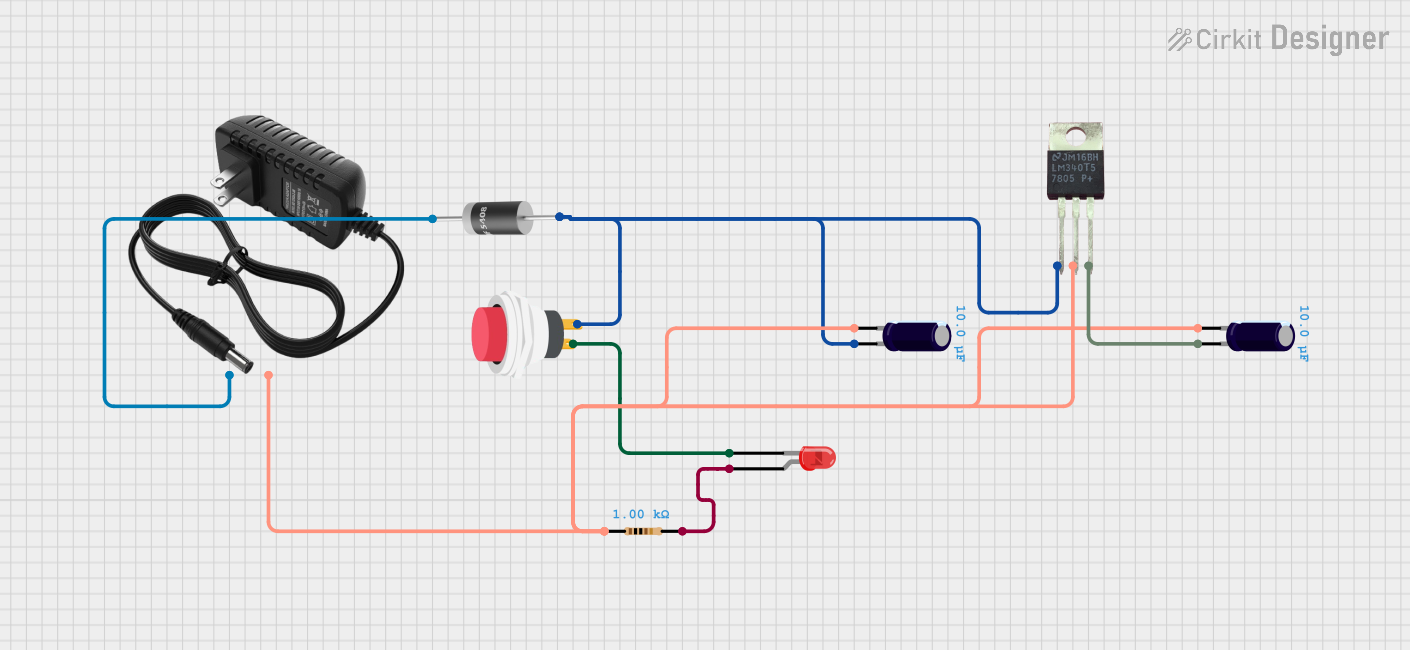
 Open Project in Cirkit Designer
Open Project in Cirkit DesignerExplore Projects Built with 7805

 Open Project in Cirkit Designer
Open Project in Cirkit Designer
 Open Project in Cirkit Designer
Open Project in Cirkit Designer
 Open Project in Cirkit Designer
Open Project in Cirkit Designer
 Open Project in Cirkit Designer
Open Project in Cirkit DesignerCommon Applications and Use Cases
- Powering microcontrollers (e.g., Arduino, Raspberry Pi peripherals)
- Regulating voltage for sensors and modules
- Providing a stable 5V supply in battery-powered devices
- Used in DIY electronics projects and prototyping
- Voltage regulation in power supply circuits
Technical Specifications
The following are the key technical details of the 7805 voltage regulator:
| Parameter | Value |
|---|---|
| Output Voltage | 5V |
| Input Voltage Range | 7V to 35V |
| Maximum Output Current | 1A (with proper heat sinking) |
| Dropout Voltage | 2V to 2.5V |
| Operating Temperature | 0°C to 125°C |
| Package Types | TO-220, TO-92, SMD |
Pin Configuration
The 7805 typically comes in a TO-220 package with three pins. The pinout is as follows:
| Pin Number | Name | Description |
|---|---|---|
| 1 | Input | Connect to the unregulated input voltage (7V–35V). |
| 2 | Ground | Common ground for input and output. |
| 3 | Output | Provides the regulated 5V output. |
Usage Instructions
How to Use the 7805 in a Circuit
- Input Voltage: Connect the input pin (Pin 1) to a DC voltage source between 7V and 35V. Ensure the input voltage is at least 2V higher than the desired 5V output (to account for dropout voltage).
- Ground Connection: Connect the ground pin (Pin 2) to the circuit's ground.
- Output Voltage: Connect the output pin (Pin 3) to the load that requires a 5V supply.
- Capacitors: Add capacitors to stabilize the voltage and reduce noise:
- Place a 0.33µF capacitor between the input pin and ground.
- Place a 0.1µF capacitor between the output pin and ground.
- Heat Dissipation: If the load draws significant current (close to 1A), attach a heat sink to the 7805 to prevent overheating.
Example Circuit
Below is a simple circuit diagram for using the 7805:
+7V to +35V
|
|
[C1] 0.33µF
|
|-----> Pin 1 (Input)
|
7805
|
|-----> Pin 2 (Ground)
|
[C2] 0.1µF
|
|-----> Pin 3 (Output) -----> +5V to Load
Using the 7805 with an Arduino UNO
The 7805 can be used to power an Arduino UNO by providing a regulated 5V supply to its 5V pin. Below is an example Arduino code to blink an LED when powered by the 7805:
// Simple LED Blink Example
// This code assumes an LED is connected to pin 13 of the Arduino UNO.
void setup() {
pinMode(13, OUTPUT); // Set pin 13 as an output pin
}
void loop() {
digitalWrite(13, HIGH); // Turn the LED on
delay(1000); // Wait for 1 second
digitalWrite(13, LOW); // Turn the LED off
delay(1000); // Wait for 1 second
}
Important Considerations
- Input Voltage: Ensure the input voltage is at least 2V higher than the output voltage (minimum 7V for a 5V output).
- Heat Management: Use a heat sink if the regulator gets too hot during operation.
- Capacitors: Always use the recommended capacitors to ensure stable operation and reduce noise.
- Current Limit: Do not exceed the maximum output current of 1A. For higher currents, consider using a switching regulator or a parallel configuration.
Troubleshooting and FAQs
Common Issues and Solutions
| Issue | Possible Cause | Solution |
|---|---|---|
| Output voltage is not 5V | Input voltage is too low | Ensure input voltage is at least 7V. |
| Regulator overheats | Excessive current draw or no heat sink | Add a heat sink or reduce the load current. |
| Circuit is noisy or unstable | Missing or incorrect capacitors | Add 0.33µF and 0.1µF capacitors as specified. |
| No output voltage | Incorrect pin connections | Verify the pin connections and polarity. |
| Output voltage drops under load | Load current exceeds 1A | Reduce the load current or use a higher-rated regulator. |
FAQs
Can I use the 7805 with an AC input?
- No, the 7805 requires a DC input. Use a rectifier and filter circuit to convert AC to DC before connecting to the 7805.
What happens if I exceed the input voltage range?
- Exceeding the maximum input voltage (35V) can damage the regulator. Always stay within the specified range.
Can I use the 7805 without capacitors?
- While the 7805 may work without capacitors in some cases, it is highly recommended to use the specified capacitors to ensure stable operation and reduce noise.
Is the 7805 suitable for battery-powered devices?
- Yes, but ensure the battery voltage is within the input range (7V–35V) and consider the power loss due to heat dissipation.
By following this documentation, you can effectively use the 7805 voltage regulator in your electronic projects.